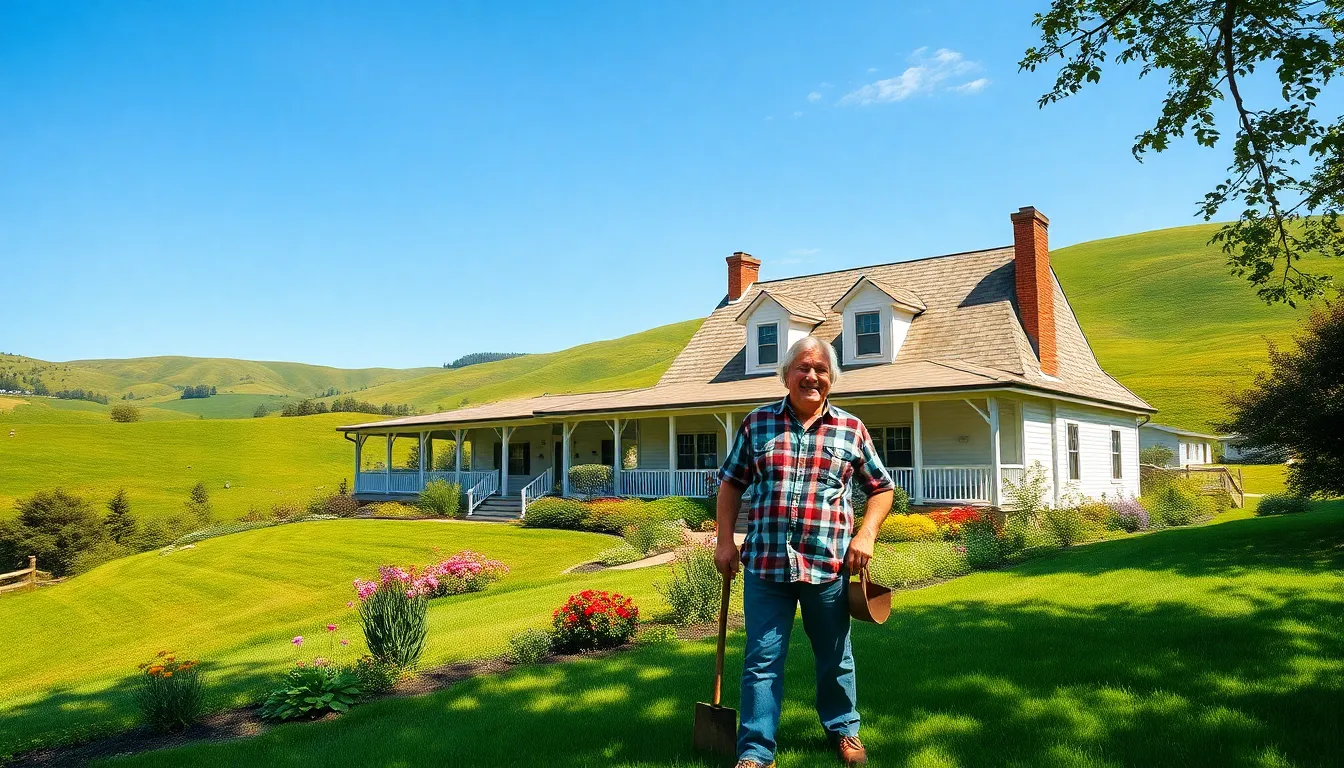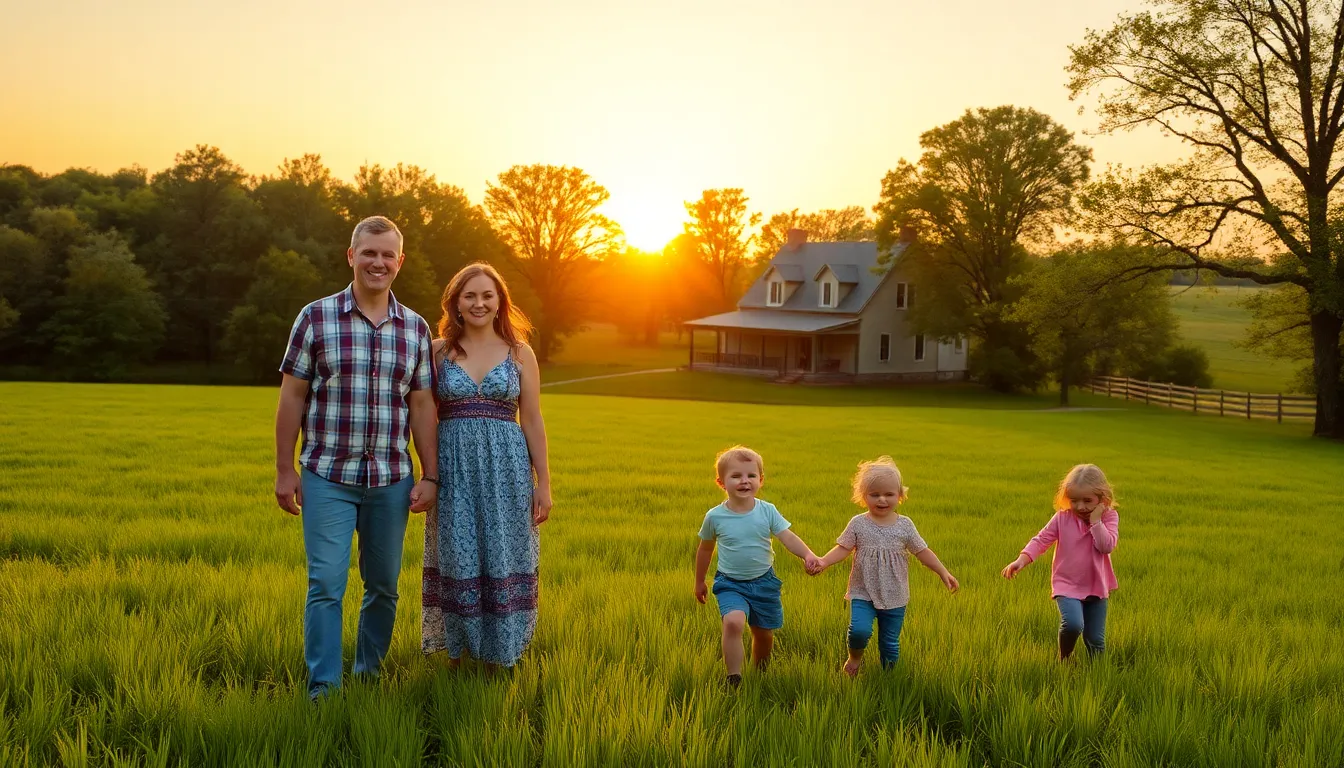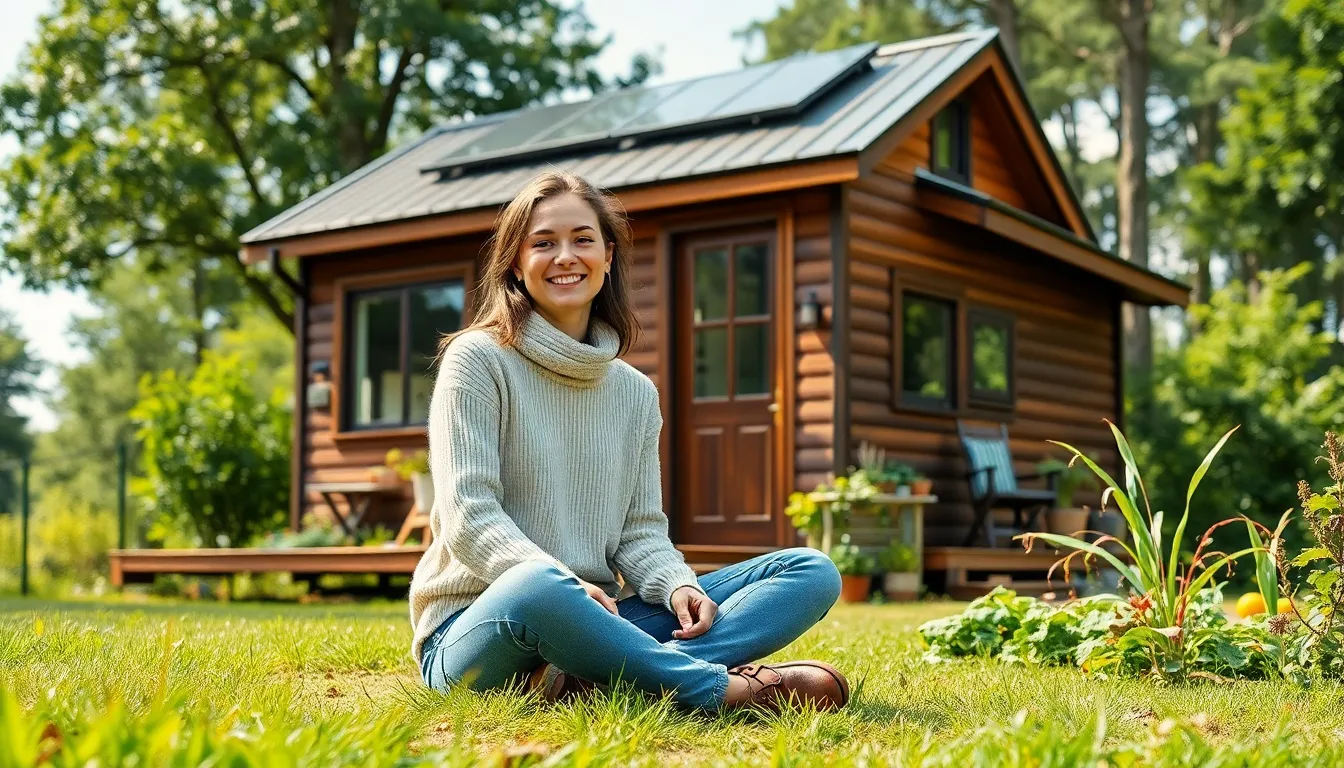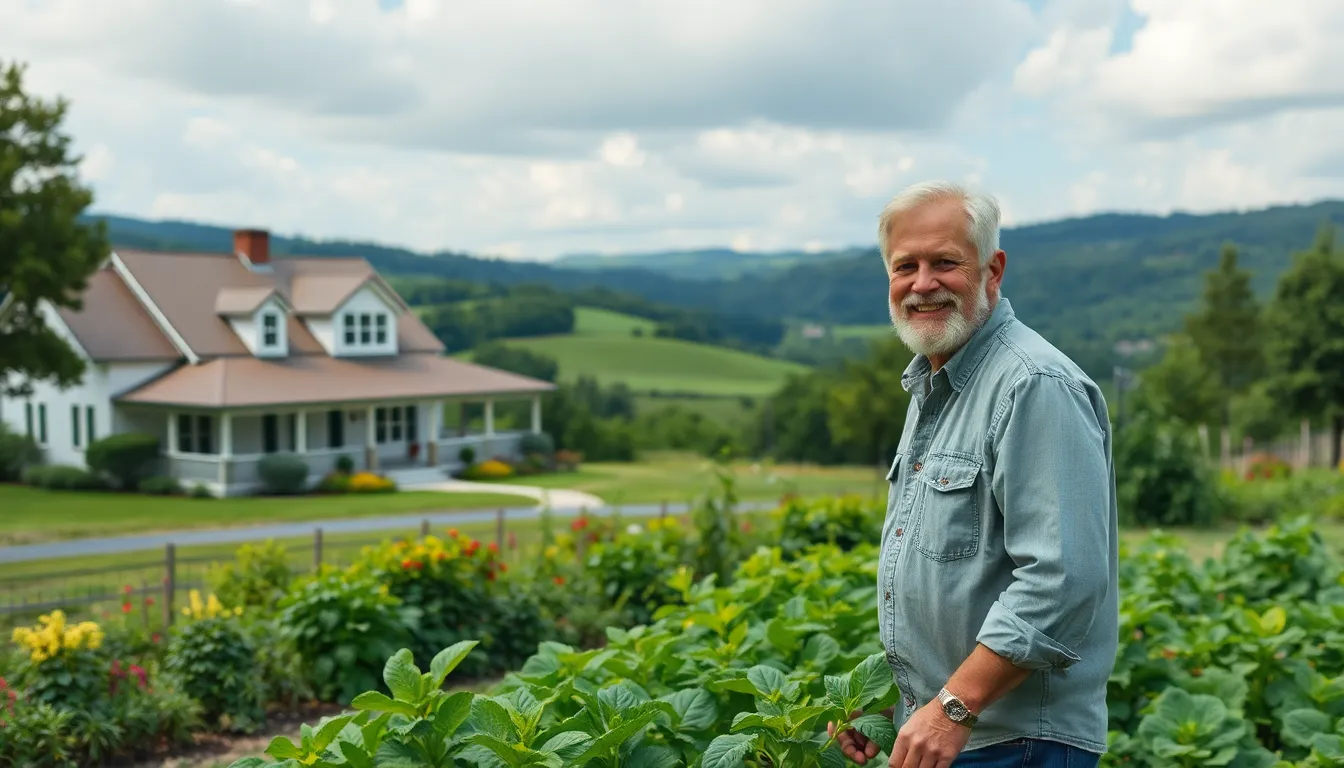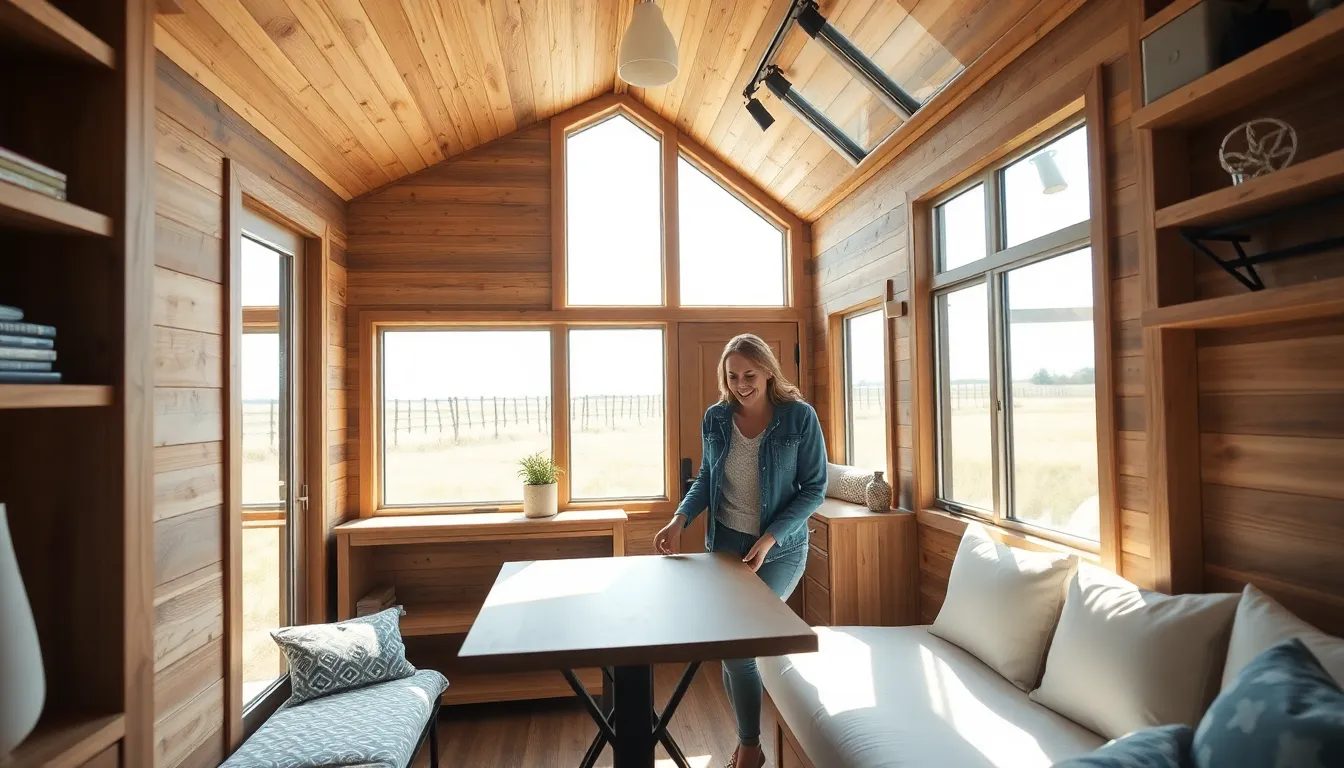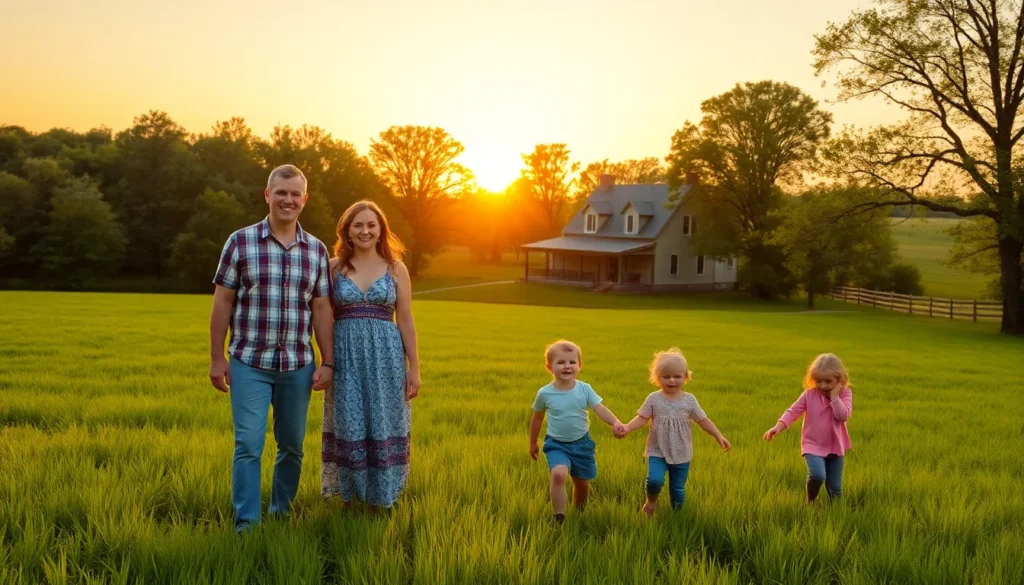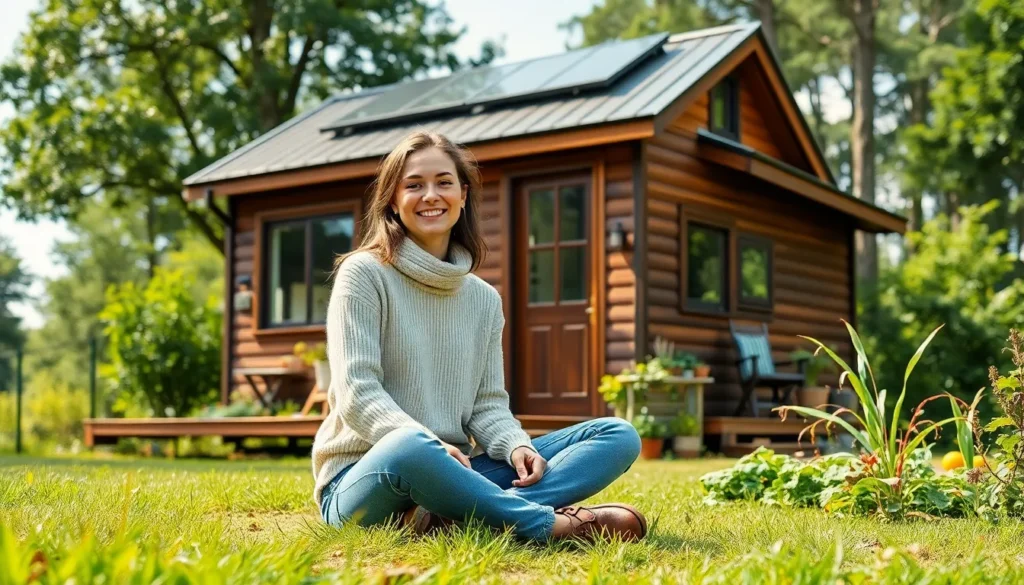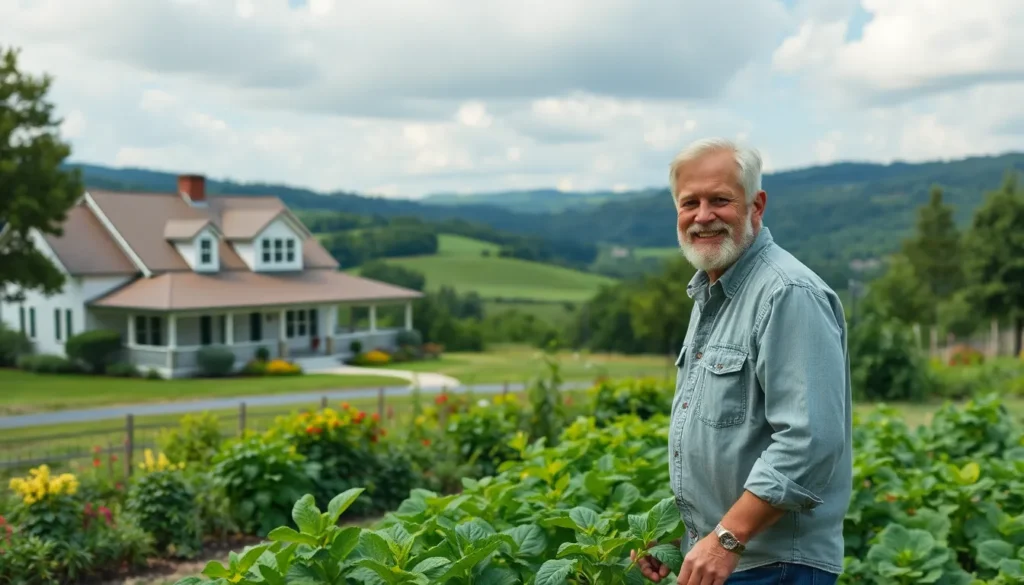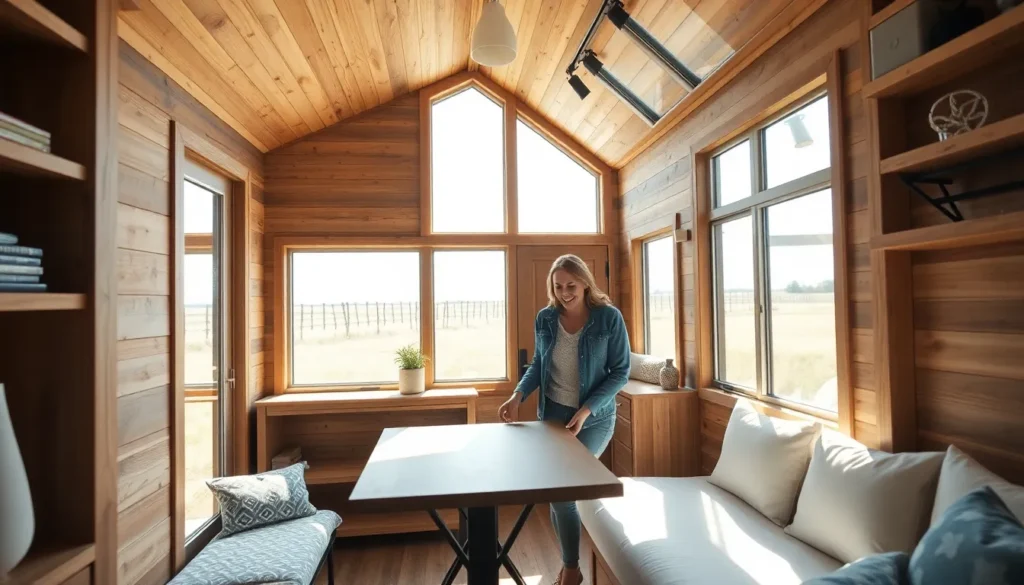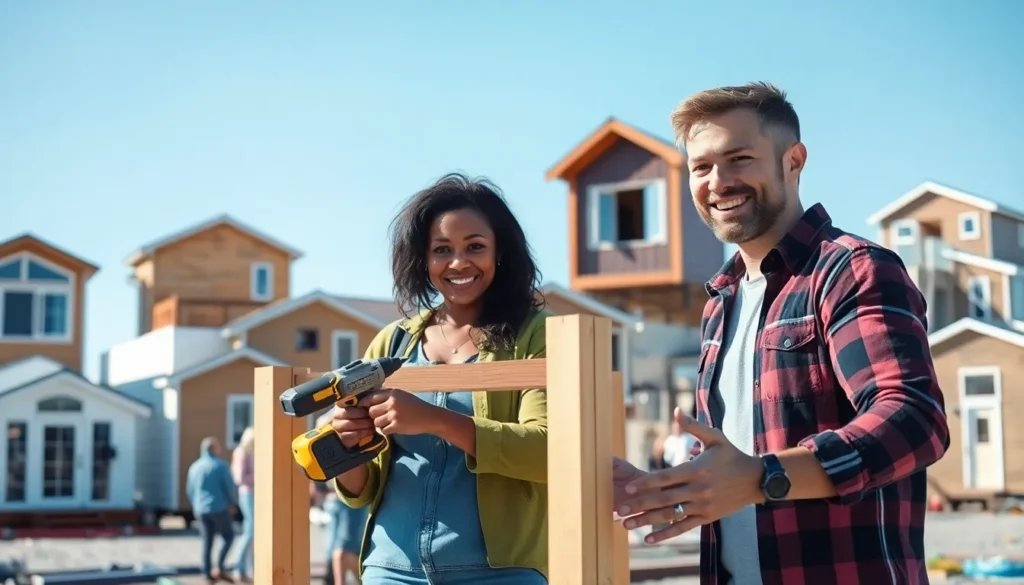In recent years, estate rural homes have captured the imagination of those seeking a serene escape from urban life. Nestled in picturesque landscapes, these properties offer a unique blend of luxury and tranquility, making them an appealing choice for families and retirees alike. The charm of sprawling fields and the beauty of nature create an idyllic setting that many find irresistible.
With the growing trend of remote work, more people are looking to invest in rural estates as a way to enhance their quality of life. These homes not only provide ample space and privacy but also a sense of community that’s often missing in bustling cities. As the demand for rural living continues to rise, understanding the benefits and features of estate rural homes becomes essential for potential buyers and investors.
Table of Contents
ToggleOverview of Estate Rural Homes
Estate rural homes encompass a diverse range of properties situated in serene, picturesque environments. These homes often feature large plots of land, which provide ample outdoor space for gardening, recreation, or privacy. Many estate rural homes include amenities such as swimming pools, guesthouses, and horse stables, appealing to families, retirees, and nature enthusiasts alike.
Location plays a critical role in the appeal of estate rural homes. Properties in areas with scenic views, such as mountains, forests, and lakes, typically fetch higher prices. Homebuyers often prioritize proximity to outdoor activities, including hiking, fishing, and skiing. The sense of community found in rural areas enhances the attractiveness, fostering connections among residents.
Design aesthetics can vary widely among estate rural homes. Architectural styles often range from traditional farmhouses to modern, sleek designs, allowing for personal preferences. Interior spaces typically emphasize open floor plans, large windows, and natural materials, which create a welcoming atmosphere.
Estate rural homes often serve as both primary residences and vacation retreats. Buyers recognize the potential for rental income, as these properties attract tourists seeking a countryside escape. The growing trend of remote work has driven interest in these homes, as many individuals desire a peaceful environment that enables concentration and productivity away from urban distractions.
Ownership of an estate rural home can offer long-term financial benefits. Increased demand for rural properties may lead to appreciation in value. Furthermore, additional revenue streams such as agritourism or leasing land for agricultural purposes can enhance investment potential in these regions.
Benefits of Estate Rural Homes
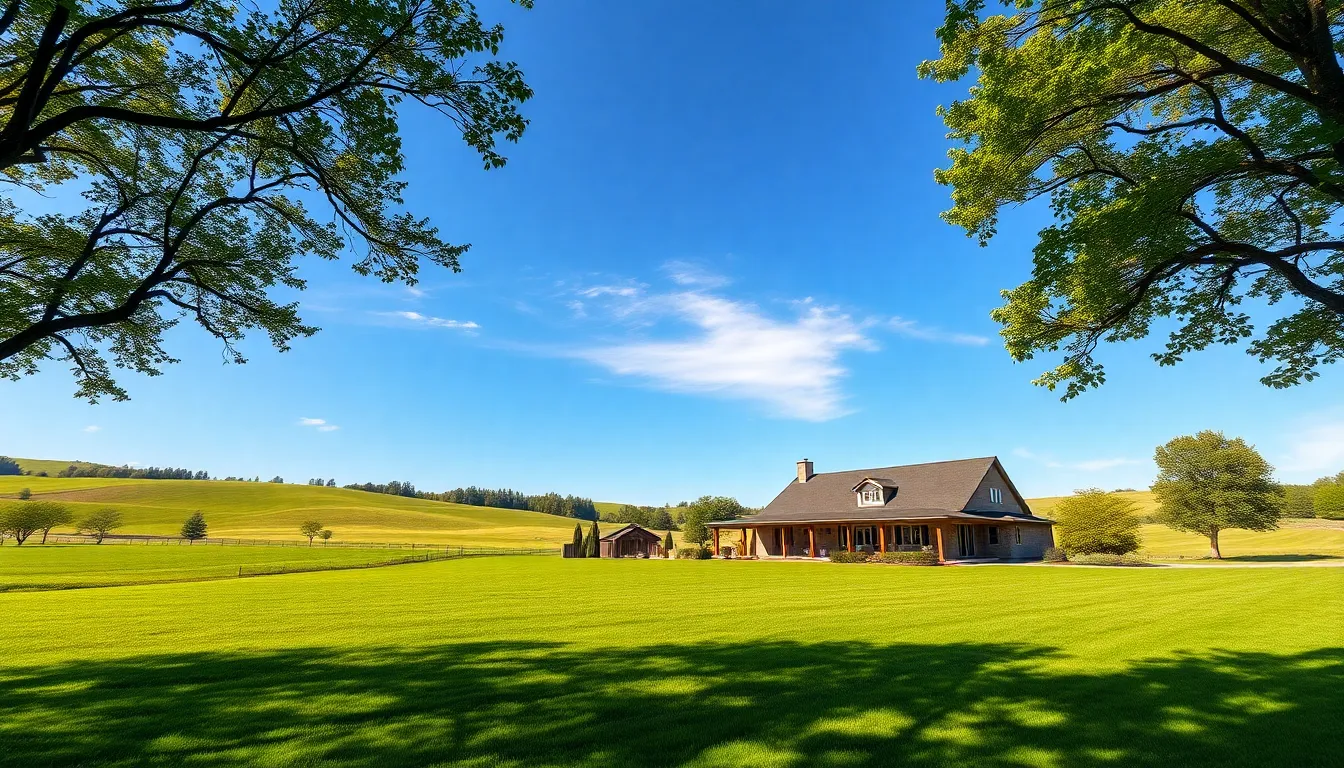
Estate rural homes offer a variety of advantages, making them appealing for many buyers. These benefits include scenic views, natural surroundings, privacy, and ample space.
Scenic Views and Natural Surroundings
Estate rural homes often feature breathtaking views of rolling hills, forests, or lakes. These picturesque landscapes enhance the quality of life, creating a peaceful atmosphere ideal for relaxation. Properties are usually set in areas rich in flora and fauna, allowing residents to enjoy outdoor activities and appreciate nature year-round. Many homes also include expansive gardens that provide opportunities for gardening and landscaping, further connecting owners to their surroundings.
Privacy and Space
Estate rural homes provide significant levels of privacy that urban settings lack. With large plots of land, residents enjoy distance from neighbors, fostering a sense of solitude. Space also allows for more personalized living environments, including outdoor areas for family gatherings, recreational activities, or simply unwinding amid nature. The reduction in noise pollution from city life enhances tranquility, making these homes attractive for those seeking a serene lifestyle.
Design Features of Estate Rural Homes
Estate rural homes exhibit a range of design features that reflect their unique surroundings. Architectural styles and interior design trends significantly contribute to their appeal.
Architectural Styles
Estate rural homes showcase various architectural styles, enhancing their charm and character.
- Farmhouses: Traditional farmhouses emphasize functionality and warmth, often featuring wide porches, pitched roofs, and wooden siding that blend harmoniously with the rural landscape.
- Cottages: Quaint cottages provide a cozy retreat, showcasing stone exteriors, gabled roofs, and lush gardens, making them ideal for those desiring a rustic aesthetic.
- Contemporary: Modern designs incorporate sleek lines, large windows, and eco-friendly materials, creating open and airy spaces that connect seamlessly with nature.
- Victorian: Elegant Victorian homes stand out with intricate detailing, turrets, and expansive verandas, offering a touch of historical significance.
- Mediterranean: These homes feature stucco exteriors, terracotta roofs, and arched doorways, evoking a relaxed, sun-soaked ambiance that’s perfect for rural settings.
Interior Design Trends
Interior design trends in estate rural homes focus on comfort, functionality, and a connection to the natural environment.
- Open Floor Plans: Space maximization encourages fluid movement between living areas, fostering an inviting atmosphere for entertaining and family gatherings.
- Natural Materials: Wood, stone, and organic textiles create warm, inviting interiors. Exposed beams and stone fireplaces add character and enhance a sense of coziness.
- Neutral Palettes: Soft color palettes featuring earth tones establish calm, serene environments that reflect the surrounding landscape.
- Indoor-Outdoor Living: Large windows and sliding glass doors enhance natural light and promote access to outdoor spaces, encouraging outdoor relaxation and enjoyment.
- Rustic Accents: Decor elements such as reclaimed wood, vintage furnishings, and artisan-crafted pieces connect interiors to the rural ethos and add personal touches.
These design features contribute significantly to the appeal of estate rural homes, catering to those who seek both luxury and tranquility in harmonious settings.
Choosing the Right Location
Selecting an ideal location is vital when investing in estate rural homes. The right site can enhance lifestyle quality and long-term value.
Factors to Consider
- Proximity to Amenities: Look for areas near essential services like grocery stores, healthcare facilities, and schools. Accessibility to these amenities can significantly influence daily living.
- Natural Features: Select locations with scenic landscapes, such as mountains, lakes, or forests. These elements not only enhance the property’s aesthetic but also provide recreational opportunities.
- Community Environment: Evaluate the local community’s vibe. Friendly neighborhoods and active local groups contribute to a sense of belonging.
- Climate Conditions: Consider weather patterns and seasonal changes. Some may prefer warm climates, while others enjoy distinct seasons.
- Land Use Regulations: Research zoning laws and land use policies. Restrictions can impact future expansion or modifications to the property.
- Safety and Security: Analyze crime rates in potential areas. A safe environment enhances comfort and peace of mind.
Popular Regions for Estate Rural Homes
- New England: Known for its picturesque landscapes and charming towns, states like Vermont and New Hampshire attract many buyers.
- The South: Rural areas in Virginia and Tennessee offer sprawling properties with rich histories and vibrant cultures.
- The Midwest: Regions like Wisconsin and Minnesota feature expansive farmland and lakes, appealing to nature lovers and outdoor enthusiasts.
- The Pacific Northwest: Washington and Oregon provide unique mountainous terrains and lush greenery, drawing those who appreciate nature.
- The Southwest: Arizona properties appeal to buyers seeking desert landscapes and warm weather, perfect for sun lovers.
- The Southeast: Areas in North Carolina and Georgia boast beautiful vistas and a friendly atmosphere, making them popular choices for families.
Estate rural homes represent a unique opportunity for those seeking a harmonious blend of luxury and nature. With their spacious environments and serene settings, these properties cater to a growing desire for tranquility away from urban chaos. The appeal of remote work has only amplified interest in these estates, making them ideal for families and retirees alike.
As the demand for rural living continues to rise, potential buyers can find significant value in these homes. The combination of aesthetic charm, ample outdoor space, and investment potential makes estate rural homes a compelling choice. Whether as a primary residence or a vacation retreat, these properties offer an enriching lifestyle that prioritizes comfort, privacy, and connection to nature.

